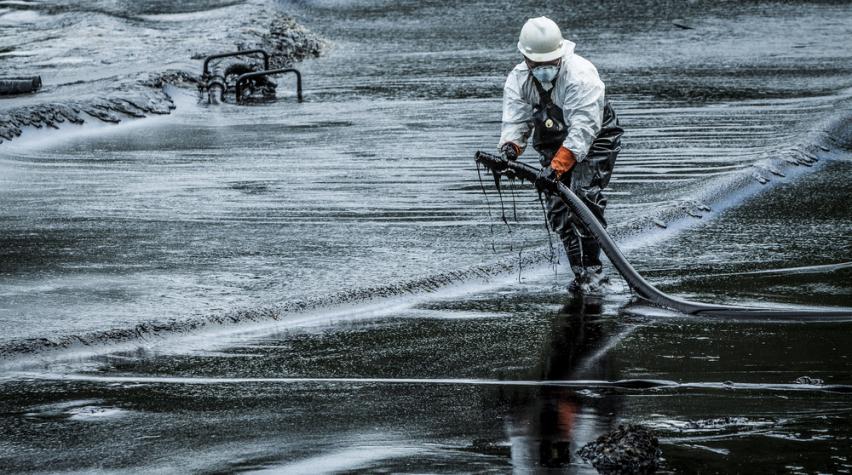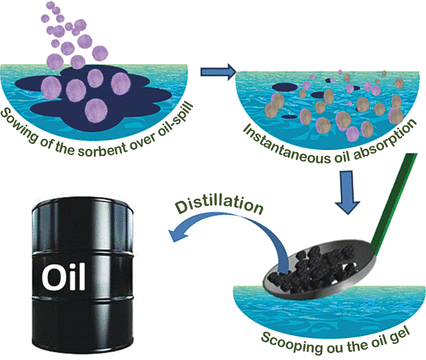
Scientists in southern India have developed a potentially valuable new tool for oil spill cleanups that absorbs oil, allowing it to be removed from the water in a solid phase. The technology collects the oil in a cellulose matrix and then turns the oil into a rigid gel.
Inexpensive and environmentally friendly
To create the oil-absorbing material, cellulose is impregnated with an oleogelator made from an inexpensive mannitol-based organic compound. The scientists chose cellulose because it serves as a cheap and environmentally friendly porous carrier matrix.
The finished product can simply be added to oil spills and then scooped out. This is possible because of the gelation process. Gelation occurs because the gelator molecules are dissolved in the oily phase, and then they form a three-dimensional fiber network through hydrogen bonding. The oil becomes trapped in this fibrillar network to form a rigid gel.

Another key to the material’s success is that impregnation with the gelatin causes the cellulose matrix to become hydrophobic, so it doesn’t take on water while also absorbing oil.
For more information about this work, see the researchers’ published work in Angewandte Chemie.


